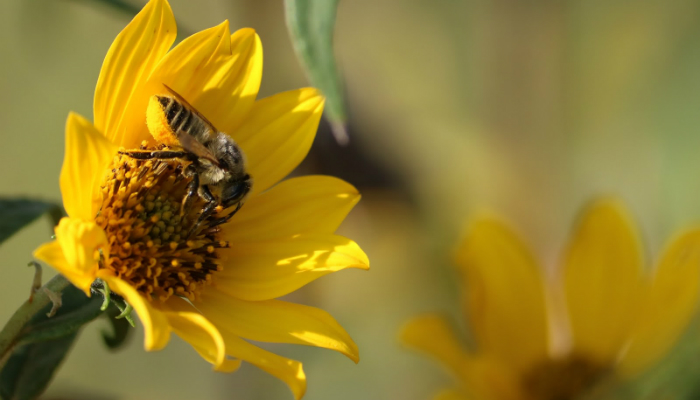A Wonderful Neighbor: The Pollen-Bellied Leafcutter

Most people are familiar with bees that collect and carry pollen on their legs in either specialized pollen baskets called corbiculae or on long bristles called scopae. Only females have these structures, and they carry pollen back to their hives or nests, where the sweet, nutritious bits are used to provision egg chambers for their (or their queen’s) offspring.
A slightly different strategy is used by bees in the Leafcutter family (Megachilidae). The female Leafcutters have scopae on the underside of their flattened abdomen, which collect pollen as they forage and give their underbelly a dusty, glowing golden hue. This method of pollen collection is a bit sloppy, and the pollen scatters easily as the bee forages, making her a very good pollinator (at her own expense–she will need many more foraging trips to supply her egg chambers compared to honeybees, who moisten the pollen with so it sticks together and stays tidily within the pollen baskets).
Leafcutter bees are solitary, and each female constructs chambers for her eggs in cavities found in wood, plant stems, or sometimes in the ground. Their name comes from their habit of neatly chewing circular bits of leaf that are used to line and separate each egg chamber (one egg and a supply of “bee bread” in the form of pollen or a pollen/nectar mix). The larva with survive on these provisions within the chamber through several instars, or molts, until they pupate and emerge from the chamber as an adult.
The Leafcutter is a busy bee, and a wonderful neighbor. Consider her before cleaning up stems and branches in your garden, as she may make use of them for her eggs. You can also purchase houses, or bundles of tubes, to encourage her to make her brood chambers near your garden.
Originally published on Sycamore Greenway Friends.
Tags: bee, leafcutter, Melissa Serenda, pollinators

